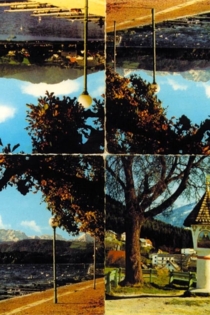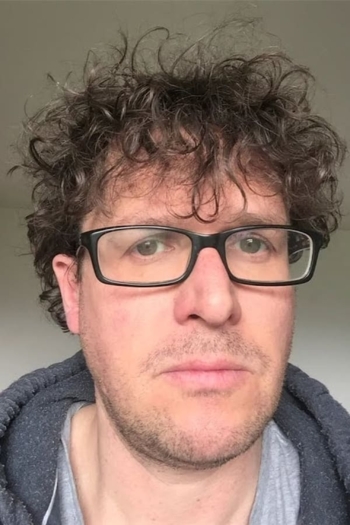
Siegfried A. Fruhauf
1976 (49 лет)Frontale
Siegfried A. Fruhauf
Two faces, magically doubled. A man and a woman desire one another, their eyes meet, they are about to kiss. Suddenly, cars crash into obstacles, smash against walls, penetrate, pile up, demoralize the trembling couple in increasingly rapid rhythms. Frontal is about the nature of cinema: about passion and destruction, erotic magnetism and the visual attraction of catastrophe.
Frontal
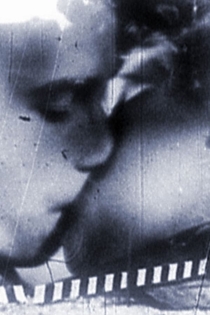
Night Sweat
Siegfried A. Fruhauf
The sky’s blue hanging above the black of a forest. Lightning flashes over a clearing. And the white ball of the moon with dark spots. These are the three suggestions that make Night Sweat an examination of a visual effect’s technical aspects. The film was shot in analog Hi-8 video. Its poor resolution, especially in precarious light conditions, occupies the foreground in the first and third chapters. At the same time the musical accompaniment matches perfectly, with scattering beats, dubby wisps of sound and intensifying distortion effects.
Night Sweat

Mirror Mechanics
Siegfried A. Fruhauf
"The film as a mirror and, as a further consequence, the phenomenon of identification primarily inherent in feature films, condense to a type of essence of film's potential. This film reports on cinema and the processes within it. In doing so, it doesn't reveal any secrets, but instead, attempts to transfer – in the sense of seeing what we see – what we do in the cinema and what also can be relevant outside of film into a visually stimulating and captivating event." (Siegfried A. Fruhauf)
Mirror Mechanics

Exposed
Siegfried A. Fruhauf
Exposed uses short scene from a feature film – a man observes a dancing woman through a keyhole – as the raw material. Solely fragments of this tableau are visible to the viewer, and Fruhauf "re-exposes" the scene by passing the perforations of a strip of film in front of the projector so that they resemble a moving sieve. While the moving stencil allows us to see no more than portions of the scene, the narration's "peeping tom" motif is repeated in our own perception. Sight can no longer be taken for granted and therefore increases in fascination. Fruhauf also breaks up the intended movement of the found footage on the temporal level. The apparent irregularity of the fields of light scanning over the strip of film is juxtaposed with a metronomically precise rhythm which segments the scene. Successive shots often vary to no more than a minimal degree. Similar to a record album with a crack, the progression shifts in minute but regular ways.
Exposed

Realtime
Siegfried A. Fruhauf
All that film is can be reduced to two elements: light and (proportionately structured) movement. And there are many possible answers to the question of what light and proportionate movement are. In REALTIME, Siegfried Fruhauf has decided on the most simple one, summing it up in the most symbolically unequivocal and, literally, most illuminating way: the sun. The light of the sun is the only type of lighting used to illuminate the movie screen in REALTIME. And the sunrise, filmed in real time, is the only discernible motion – which makes us realize that all motion, in film and in the cosmos, is temporal.
Realtime

Ground Control
Siegfried A. Fruhauf
Ground Control is a rough video miniature. It begins with the simplest and most fundamental thing the electronic moving-image machine has to offer: the uncontrolled beam of electrons directed across a photoelectric layer of cesium oxide lining a Braun tube, or snow. Recording this chaos involves a fascination that existed during the early days of film: the repeatability of a unique event. A visual sequence which has never before existed and will never happen again becomes reproducible, thereby losing the status of the chaotic. This idea, a result of the desire to control an uncontrollable world, is the beginning of the chain of associations in this video, which randomly acting ants push their way into. The image of them crawling is manipulated in the reproduced images, distortion of their movement is forced upon them. The insects become monsters when, after being locked into the frame, they suddenly burst into the (snow)storm as a sequence of individuals.
Ground Control

Vintage Print
Siegfried A. Fruhauf
Like a Santiago Álvarez squared (or multiplied by 4K, to be more precise), Siegfried A. Fruhauf –a descendant of Austria’s Great Generation of Tscherkassky, Deutsch and Arnold– rede- fines with Vintage Print the power of film as imagination, at the service of an amazing economy of resources. If the pioneer of Cuban montage cinema became immortal when he left us his phrase “give me two photographs, a moviola, and some music, and I’ll make you a film,” Fruhauf slims down that recipe by cre- ating thirteen hyperkinetic minutes out of a single, century-old glass negative in decomposition. Ranging from figurative to ab- stract art, analogy to digital, and documentary to experimental, Vintage Print’s definitive achievement is that it reverses a road movie in its own terms, and the first thing that is left behind is the very same notion of cinema.
Vintage Print

Structural Filmwaste. Dissolution 1
Siegfried A. Fruhauf
Structural Filmwaste. Dissolution 2 is the continuation of investigations into the fragmentation of time and images through video. It also represents an attempt to reveal the material nature of this vehicle of illusions. Depictions of a film strip (with sprocket holes, frame lines, splices, etc.) were reduced to horizontal and vertical lines with a resolution comparable to that of video. The image itself comprises two different temporal structures which are interlaced in the alternation between the half images.
Structural Filmwaste. Dissolution 1

The Mozart Minute
Michaela Schwentner, Michael Glawogger
Twenty-eight well-known filmmakers living and working in Austria were invited by WIENER MOZARTJAHR 2006, to produce associative miniatures on Mozart. Requirement: they had to be one-minute artistic short films. The directors come from a whole range of different backgrounds, ranging from animated, experimental and short film to documentaries and feature films. The result is a multi-facetted sampler of diverse formal and contextual positions with regard to Mozart’s person and his influence on today’s society, art and culture. The contributions run the gamut from experimental-conceptual statements through socio-critical and documentary observations to pithy short feature films.
The Mozart Minute
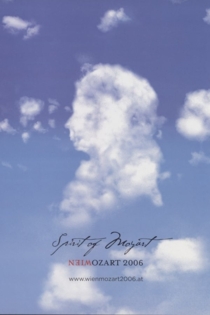
Still Dissolution
Siegfried A. Fruhauf
The title of this miniature heralds a series of tensions for which Siegfried A. Fruhauf has found a new form: "Still Dissolution" measures the relationship between photography and film, standstill and motion, formation and dissolution, now and then, and material reality and illusion, and does so in an interplay of analogue and digital visual technologies.
Still Dissolution
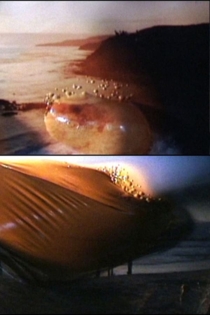
Blow-Up
Siegfried A. Fruhauf
The raw material used in Blow-up comprises two shots from an old educational film about first aid: A man demonstrates mouth-to-mouth resuscitation on a life-size dummy; the dummy´s chest rises and falls. Fruhauf introduces this scene into his own métier, turning the "blow-up" metaphor into an image with a false bottom. With the aid of a digital photocopier, the strip of film was reduced in size to a narrow ribbon, and Blow-up shows this transformation in reverse.
Blow-Up
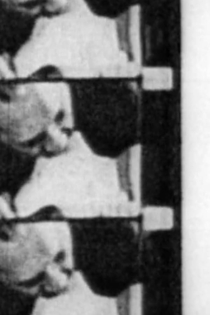
SUN
Siegfried A. Fruhauf
SUN – which is not necessarily typical for the genre – consists of nothing more than a dozen static shots with little or no movement. The main subject of both the video and the song's lyrics are identical. But this is not immediately obvious: In a slow reverse zoom the white glare filling the picture is gradually revealed to be the sun's ball of light surrounded by a green-ish yellow blaze.
Sun

Fuddy Duddy
Siegfried A. Fruhauf
FUDDY DUDDY uses the motif of the grid to blow it to pieces. Being occupied with structural film, I repeatedly draw 'frame plans', using grid structures to precisely record the succession of individual images. To me, this sometimes seems like a search for structures in an apparently chaotic world. The medium of film fulfils the need for orientation. (Siegfried A. Fruhauf)
Fuddy Duddy

Etüde
Siegfried A. Fruhauf
Etüde draws on early avant-garde film theories and practices, on the utopia of the absolute film: hearing pictures, seeing music. With the technique of hand-drawn sound, the film medium becomes the instrument, something playable. Fruhauf allows us to take part in this process, gets the sound creaking and places a hand in the picture as a subject – where it increasingly threatens to rebel against its forced role.
Etüde

